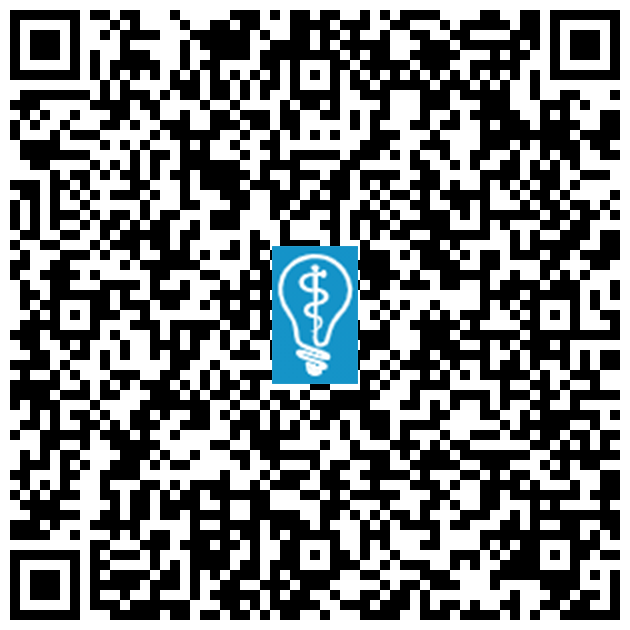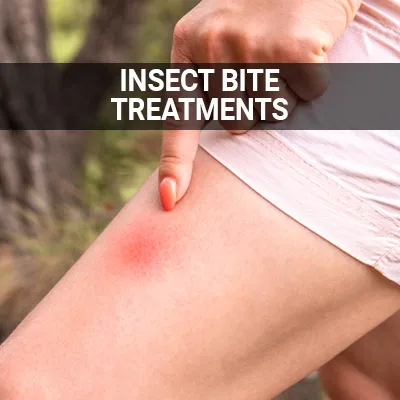Rash and Burn Treatment North Las Vegas, NV
An individual may develop a rash or suffer a burn for numerous reasons, and as such, it can often be difficult to determine the exact cause or level of severity. However, it is important for a medical professional to accurately determine both the severity and cause before recommending the most effective method of treatment. Subsequently, medical assistance is often required to effectively and efficiently treat rashes and burns.
Even though it is possible to treat minor cases at home, rashes or burns that show concerning symptoms need an immediate medical examination. If the symptoms last for an extended period of time need immediate treatment to prevent the irritation from worsening. At our urgent care facility, we can diagnose the severity of your rash or burn and help you on the path toward a full recovery. Call us at (702) 514-4295 to find out more or to make an appointment.

Urgent Care for Rashes and Burns
While prevention is the best way to deal with a rash or burn, it is not always possible to avoid. Understanding the severity of the rash or burn and seeking urgent care when it is needed is crucial to prevent infections or skin conditions. We are able to determine the exact cause, the level of severity, and create a treatment plan to eliminate the rash or burn and help prevent others from developing in the future.
Facts From The World Health Organization
- Infections that cause rashes may be fungal, bacterial, parasitic, or viral.
- Rashes that last more than a few days should be evaluated by a medical professional.
- Over-the-counter products may help with certain skin rashes.
- Common rashes include eczema, poison ivy, and athlete’s foot.
- An estimated 180,000 deaths occur each year as a result of a severe burn.
- Burns occur mainly at home or in the workplace.
- Burns are preventable by instilling the right precautionary measures into homes and workplaces.
- Burns are the fifth most common cause of non-fatal childhood injuries.
“Infections that cause rashes may be fungal, bacterial, parasitic, or viral.”
Causes of Rashes and Burns
Rashes
One of the most difficult parts about treating a rash or burn is determining which of the many different types it is. There are various types of rashes, including a general rash, heat rash, blisters, and hives. Treatments for rashes differ depending on their type; therefore, diagnosing a rash incorrectly may lead to improper treatment.
The only way to truly pinpoint the exact cause of a rash is to examine the patient's lifestyle and look for causes such as exposure to poison ivy or sumac, chemical exposure, or a bacterial infection. In some instances, individuals, especially toddlers, can develop what is known as a heat rash if exposed for too long to hot weather.
Burns
There are also multiple levels, degrees, of burns: first-degree burns, second-degree burns, and third-degree burns. A first-degree burn is the least severe and only damages the epidermis, which is the outermost layer of skin. Second-degree burns reach the dermis, which is the second layer of skin and is more painful. A third-degree burn is the deepest and often reaches the deeper tissues, which can cause nerve damage and other long-term issues.
It is accurate that the main cause of a burn is fire or skin exposure to a hot object. While this is true, burns can also occur due to chemical exposure, electricity, or even exposure to the sun. In order to successfully prevent burns, it is important to take precautionary measures for all burn types.
Symptoms and Treatment Options for Rashes
The symptoms of a rash differ depending on the type of rash that has been developed. The most common symptoms that apply to most rash types include:
- Redness of the skin
- Constant itching
- Burning sensation
- Red bumps
- A raised area of the skin
While it is quite obvious when a rash develops, understanding what the symptoms mean can determine the root cause of the rash, which ultimately allows you the ability to treat the underlying cause and prevent further rashes from developing.
In most cases, mild to moderate rashes can be treated at home as long as the cause can be identified. The best way to treat a rash is to find out the underlying cause, which in many cases is due to an allergy, heat exposure, or poison ivy exposure, and treat it. If you catch a rash due to poison ivy in the early stages, you can thoroughly wash the affected area in an effort to prevent the rash from getting worse. However, after a rash develops, it is best to leave it alone until proper medical treatment can be administered.
Symptoms and Treatment Options for Burns
Much like rashes, the symptoms of a burn depend largely on the type of burn that occurs. However, the most common symptoms are pain, red skin, peeling skin, itching, and swelling. While most burns are painful, pain levels are in no way indicative of how serious a burn is. In fact, there is often no pain felt at all due to the nerve damage or adrenaline rush involved in the most serious or largest burns. Since the level of severity is such a wide range, there are different treatment procedures depending on how serious the burn is.
For less serious burns, such as first degree burns and the majority of second-degree burns, holding the affected area under cold water for 10 minutes, applying aloe vera lotion to the affected area, and covering the wound with a bandage is the best form of treatment. Make sure to keep the bandage dry and change it frequently, inspecting the burn for any changes.
For more severe burns, such as third-degree burns and some of the more severe second-degree burns, it is best to seek medical assistance at either an urgent care facility or an emergency room. After a serious burn occurs, however, there are certain safety measures that should be taken to keep the affected area from becoming infected or inflicting more pain than necessary, such as elevating the burn area and removing any material that may be on or around the affected area.
When to Seek Urgent Care for a Rash or Burn
For most minor rashes or burns, utilizing home remedies and doctor-recommended over-the-counter products can keep symptoms at a tolerable level and lead to a full recovery. However, it is important to seek urgent care for a rash or burn if:
- There are signs that developing an infection is a possibility
- The burn is deep or causes a severe level of pain
- The cause of the rash is unknown or exists on a young child
The main reason it is crucial to treat a rash or burn promptly is preventing an infection from developing as a result of the rash or burn. Our skin is the first line of defense from harmful bacteria and viruses; therefore, when the skin is harmed, there is a greater risk of developing an infection. If a burn opens up the skin, we can bandage it or treat the source of a bacterial infection. We can also help prevent further infection in the future.
Additionally, any burn that reaches the deeper layers of the skin or leads to an intolerable level of pain should be treated by a medical professional. Lastly, be sure to come in for a visit any time the cause of a rash cannot be explained, especially in young children. As long as the burn is not life-threatening, we can treat it at our urgent care facility. If the burn is life-threatening, it is essential to seek treatment at an emergency room.
Questions to Ask Your Urgent Care Doctor
- What is causing my skin rash? Is it caused by an allergy?
- Can I use over-the-counter products to treat my rash, or do I need to only use prescription solutions?
- What treatment options are available for my rash?
- Should I see a skin specialist about my rashes?
- What things should I avoid to ensure the rash does not come back after treatment?
- Is there any way to make my rash feel better during treatment?
- What degree of burn did I suffer? How serious is the burn?
- How did you determine the degree of burn? What diagnostic procedures did you use?
- How long will it take for my rash or burn to go away/heal?
- If my burn does not start to feel better, how long should I wait before returning for medical assistance?
- What can I do around the house to make sure I do not get burned in the future?
- Is there a way to relieve the pain of my burn? Is it okay to take pain relief medication?
“Our skin is the first line of defense from harmful bacteria and viruses; therefore, when the skin is harmed, there is a greater risk of developing an infection.”
Check out what others are saying about our services on Yelp: Rash and Burn Treatment in North Las Vegas, NV
Questions Answered on This Page
Q. What are the causes of rashes and burns?
Q. What are symptoms and treatments for rashes?
People Also Ask
Q. What causes poison ivy dermatitis?
Q. What are the most common immunizations?
Q. What are the symptoms of a urinary tract infection?
Q. What types of reactions can occur from bites and stings?
Q. How do I keep my child calm before visiting the emergency room?
Frequently Asked Questions
Q. Why is it so crucial to seek treatment for rashes and burns? What role does the skin play in preventing infection?
A. The skin is the largest organ in the body, and it serves to protect our bodies from infection and injury. Our skin also works to regulate our body temperature and contains nerves that sense heat, pain, pressure, and touch. When our skin becomes damaged by either a skin condition or a burn, it can leave us increasingly vulnerable to infection, as the line of defense is damaged, especially with deeper second-degree burns and third-degree burns. Due to this, it is important to seek medical assistance for moderate to severe burns and rashes.
Q. What are the different degrees of burns? What do they mean?
A. There are three different burn types: first degree burns, second-degree burns, and a third-degree burn. A first-degree burn refers to a burn that only damages the epidermis, which is the outermost layer of our skin. A second-degree burn typically causes damage to the dermis, which is the layer directly underneath the epidermis. A third-degree burn refers to a more serious burn type that burns through both the epidermis and the dermis, and then may even cause damage to our nerves and tissue.
Q. How can I treat my child's sunburn?
A. Although many think of burn by exposure to a hot object or substance, sunburn is also a form of burn that should be treated with urgency if it causes more severe symptoms, such as a fever. The best way to treat sunburn is to try and keep the body cool. The way to keep the body cool is to apply a cold compress (a cold, damp washcloth usually works) and a cooling substance (aloe vera, for example) to the affected area. Additionally, anti-inflammatory medications such as ibuprofen can help reduce the swelling caused by sunburn.
Q. Are there certain activities or professions that are at a higher risk of developing a rash than others?
A. There are certain professions and activities that pose a greater risk of developing contact dermatitis. Any profession that requires you to be in close proximity to harmful chemicals, plants, or substances you are allergic to pose a greater risk of developing a rash. Additionally, medical professionals such as doctors, nurses, and caregivers should be extra cautious around patients who have a rash, as they are contagious. On the same note, anyone who works directly with people may be at an increased risk of developing a rash and should consider taking extra caution.
Q. My rash really itches. Is it okay to scratch it?
A. The short answer is no. It is never a good idea to scratch an itch caused by a rash, as it can spread the rash and cause more pain for a longer period of time. Instead, it is best to try and take measures to minimize the itch, such as applying topical anti-itch solutions and keeping the affected area from drying out. Additionally, be sure to avoid hot water by taking colder showers than normal.
Q. My child developed a rash that will not go away. What could have caused the rash in my child?
A. Children often get rashes more than adults. A large part of this can be attributed to the fact that they are generally far more adventurous and curious about unknown substances. Subsequently, do your best to keep your child away from areas that may contain poison. Most importantly, try educating them about poison ivy, so they can make the right choice when confronted with the hazardous substance while out playing. Lastly, be sure you know how to tell the difference between a general rash and a rash that is caused by more serious conditions, such as chickenpox. When in doubt, be sure to come in for a visit and allow us to help your child recover.
Start Feeling Better – Visit Us Today
By visiting us as soon as possible, our team can help get you the professional treatment you need. Instead of waiting around and allowing the symptoms to get worse, we can provide you with stronger medication and treatment options instead of ineffective store-bought products.
Definitions
Call Us Today
If you have developed a rash or suffered a burn and do not know what to do next, our urgent care facility can assist you in determining your symptoms and treating you accordingly. Visit us today (no appointment needed) or give us a call at 702-514-4295 and let us help you on your path to recovery.
Helpful Related Links
- American Journal of Medicine. American Journal of Medicine. 2023
- American Medical Association (AMA). American Medical Association (AMA). 2023
- American Medical Society For Sports Medicine (AMSSM). American Medical Society For Sports Medicine. 2023
- American Trauma Society. American Trauma Society. 2023
- John Hopkins Medicine Orthopaedic Surgery. John Hopkins Medicine Orthopaedic Surgery. 2023
- National Council on Aging. National Council on Aging. 2023
- Orthopaedic Surgery: Association of American Medical Colleges. Orthopaedic Surgery: Association of American Medical Colleges. 2023
- Radiological Society of North America. Radiological Society of North America. 2023
About our business, license, and website security
- Encompass Care was established in 1997.
- We accept the following payment methods: American Express, Cash, Discover, MasterCard, and Visa
- We serve patients from the following counties: Clark County
- We serve patients from the following cities: Las Vegas, North Las Vegas, Henderson, Paradise, Spring Valley, Boulder City, and Winchester
- Norton Safe Web. View Details
- Trend Micro Site Safety Center. View Details
Back to top of Rash and Burn Treatment










